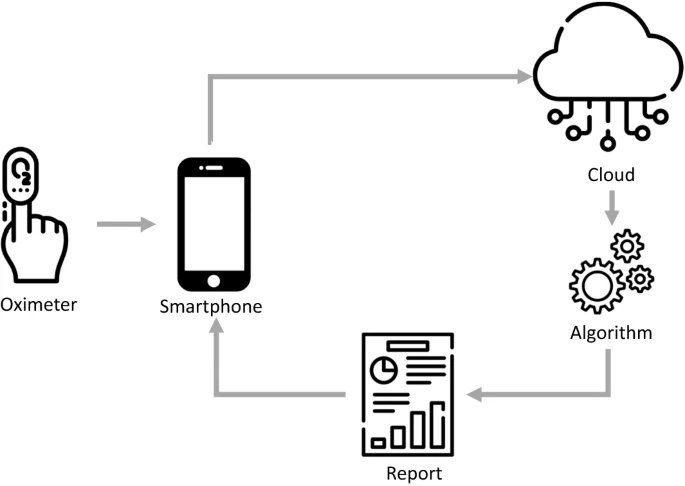- Article
- Open Access
- Published:
Abstract
Obstructive sleep apnea (OSA) is extremely common and has several consequences. However, most cases remain undiagnosed. One limitation is the lack of simple and validated methods for OSA diagnosis at home. The aim of this study was to validate a wireless high-resolution oximeter with a built-in accelerometer linked to a smartphone with automated cloud analysis (Biologix) that was compared with a home sleep test (HST, Apnea Link Air) performed on the same night. We recruited 670 patients out of a task force of 1013 patients with suspected OSA who were referred to our center for diagnosis. The final sample consisted of 478 patients (mean age: 56.7 ± 13.1 years, mean body mass index: 31.9 ± 6.3 kg/m2). To estimate the night-to-night OSA severity variability, 62 patients underwent HST for two consecutive nights. The HST-apnea–hypopnea index (AHI) and the Biologix-oxygen desaturation index (ODI) was 25.0 ± 25.0 events/h and 24.9 ± 26.5 events/h, respectively. The area under the curve—sensibility/specificity to detect at least mild (HST-AHI > 5), moderate-to-severe (HST-AHI > 15), and severe OSA (HST-AHI > 30) were (0.983)—94.7/92.8, (0.986)—94.8/93.9, and (0.990)—95.8/94.3, respectively. The limits of agreement originating from the Bland–Altman plot and the correlation between HST-AHI and Biologix-ODI were lower than the night-to-night HST-AHI variability (25.5 and 34.5 events/h, respectively, p = 0.001). We conclude that Biologix is a simple and reliable technique for OSA diagnosis at home.

No comments:
Post a Comment